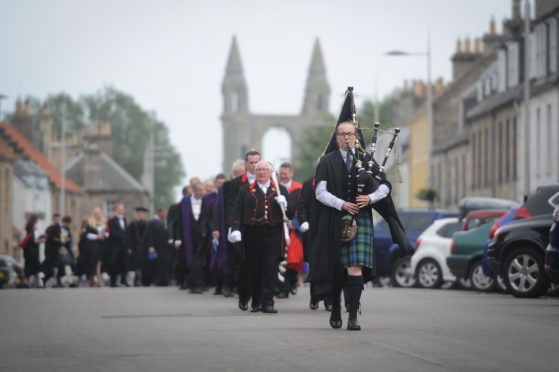New figures have revealed the St Andrews University is best in Scotland for student retention.
Higher Education Statistics Agency (HESA) data has shown the university has the lowest percentage of young full-time first degree entrants falling out of higher education, at 2.1%.
The HESA non-continuation indicator measures how many UK domiciled full-time first-degree entrants from 2016-17 were still active in higher education in 2017-18.
Dundee University came in at 4.6%, while Abertay University’s dropout rate was higher at 12.1%.
St Andrews significantly out-performs the Scottish and UK average for student retention, with figures revealing the average non-continuation rate in the UK for the sector as 6.3%, while in Scotland the figure is 5.8%.
Professor Paul Hibbert, St Andrews vice-principal education (Proctor), said: “We are delighted that the quality of learning and teaching and the wider student experience here is reflected in the encouraging data on student retention that have been released today.
“The figures also provide us with confidence that the University of St Andrews is a diverse and inclusive community, a community where students from many different backgrounds can feel that they are at home and are supported to do their best.”
Young entrants are those aged under 21, while mature students are those aged 21 or over.
The percentage of mature full-time first-degree entrants who continued at St Andrews increased to 87.5%, compared with 86.1% the previous year.
Alastair Sim, director of Universities Scotland, pointed out this is now the second year in a row where the retention rate in Scotland is better than the UK average.
“This is significant and a cause for celebration,” he said.
“Universities have dedicated significant time and effort to ensure that students get the most of their studies and time at university.
“Retention is such an important part of our work on widening access.
“Universities’ goal is to support students to achieve positive outcomes and that is bigger and more meaningful than just getting students into university.
“We take heart from today’s figures but we are not complacent.
“The work to improve retention will continue at all our universities with continued investment in student support, creating a welcoming campus for students of all ages, background and experience.”









